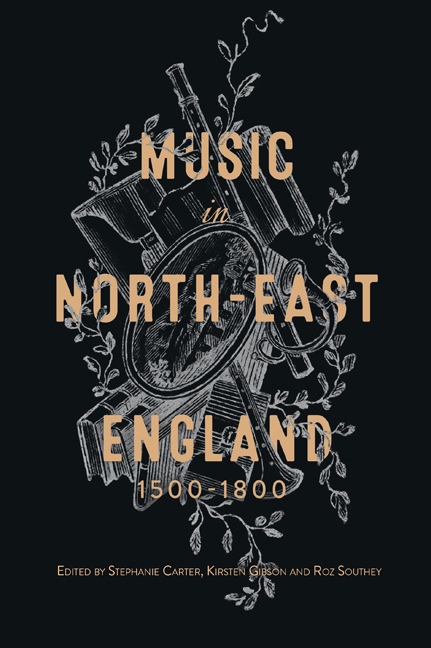2 - Recovering the Soundscape of Pre-Reformation Newcastle upon Tyne
Published online by Cambridge University Press: 17 November 2020
Summary
How can we construct the musical history of a pre-Reformation town without source materials? Newcastle upon Tyne has been well served by its historians – Bourne, Brand, Mackenzie and contributors to Archaeologia Aeliana (hereafter AA) – but they have worked thin seams of data. Unlike the rich and well-documented Durham Priory, its diocesan cathedral until 1882 (except briefly in 1553–54), pre-Reformation Newcastle has left no surviving notated polyphony and scant traces of its musical practices. Apart from a few chamberlains’ accounts (1508–11), Newcastle's civic and guild records are principally post-Reformation. However, the musical traditions of several less prominent towns are well documented between the 1340s and the 1540s, a golden age of polyphony. Using this data, therefore, we can recover something of Newcastle's pre-Reformation soundscape.
In the process we will view Newcastle through the eyes of one of its best-documented visitors, Margaret Tudor. The daughter of Henry VII passed through Newcastle in July 1503 on route to her new husband, King James IV of Scotland; her nuptial progress up the Great North Road was minutely recorded by John Young, Somerset Herald (Figure 2.1). Young's account provides the earliest evidence for the presence of trained choirboys in Newcastle, but 1503 also happens to be a propitious year in England's pre-Reformation music history. The emblematic Eton Choirbook was copied around 1503, and some of the pieces it contains probably travelled north with Margaret; coincidentally, in 1503 the composer William Brygeman worked at Eton before moving to Bristol, one of Newcastle's comparator towns.
Several months after her marriage by proxy on 25 January 1503, the fourteen-year-old bride travelled with the king to Collyweston (Northamptonshire), residence of her formidable grandmother Margaret Beaufort. On 8 July the bridal retinue embarked upon a sequence of royal entries, several involving ‘colleges’ of clergy: Grantham, where Margaret was greeted by the ‘Freres mendicants’ and ‘Colledge of the sayd place’; Newark, where ‘owt of the sayd Towne cam before hyr the College arayde richly in Processyon’; and Pontefract, where she was escorted by ‘the College of the said Place togeder with the Freres Jacobyns in Processyon’.
- Type
- Chapter
- Information
- Music in North-East England, 1500–1800 , pp. 29 - 53Publisher: Boydell & BrewerPrint publication year: 2020



